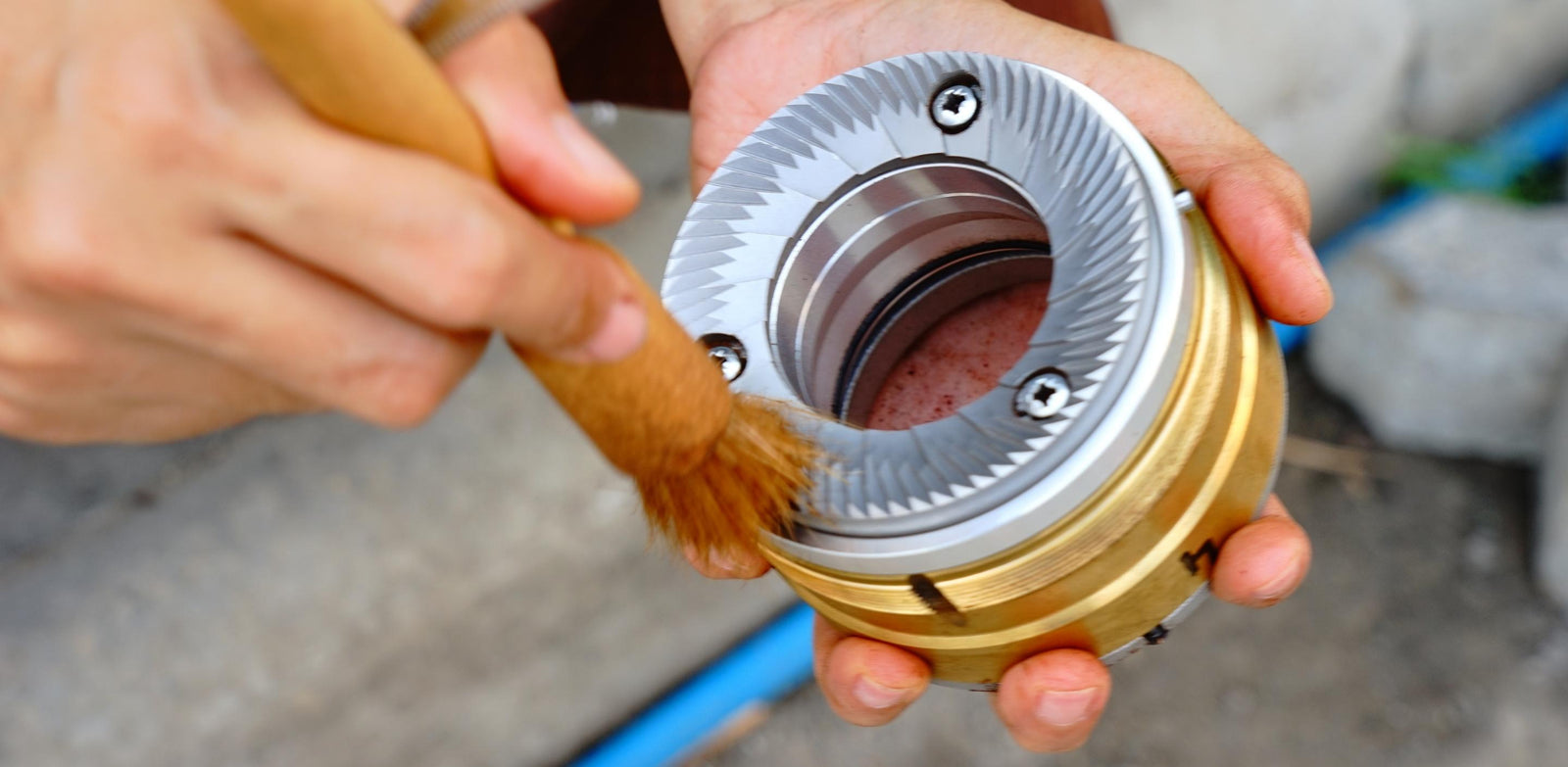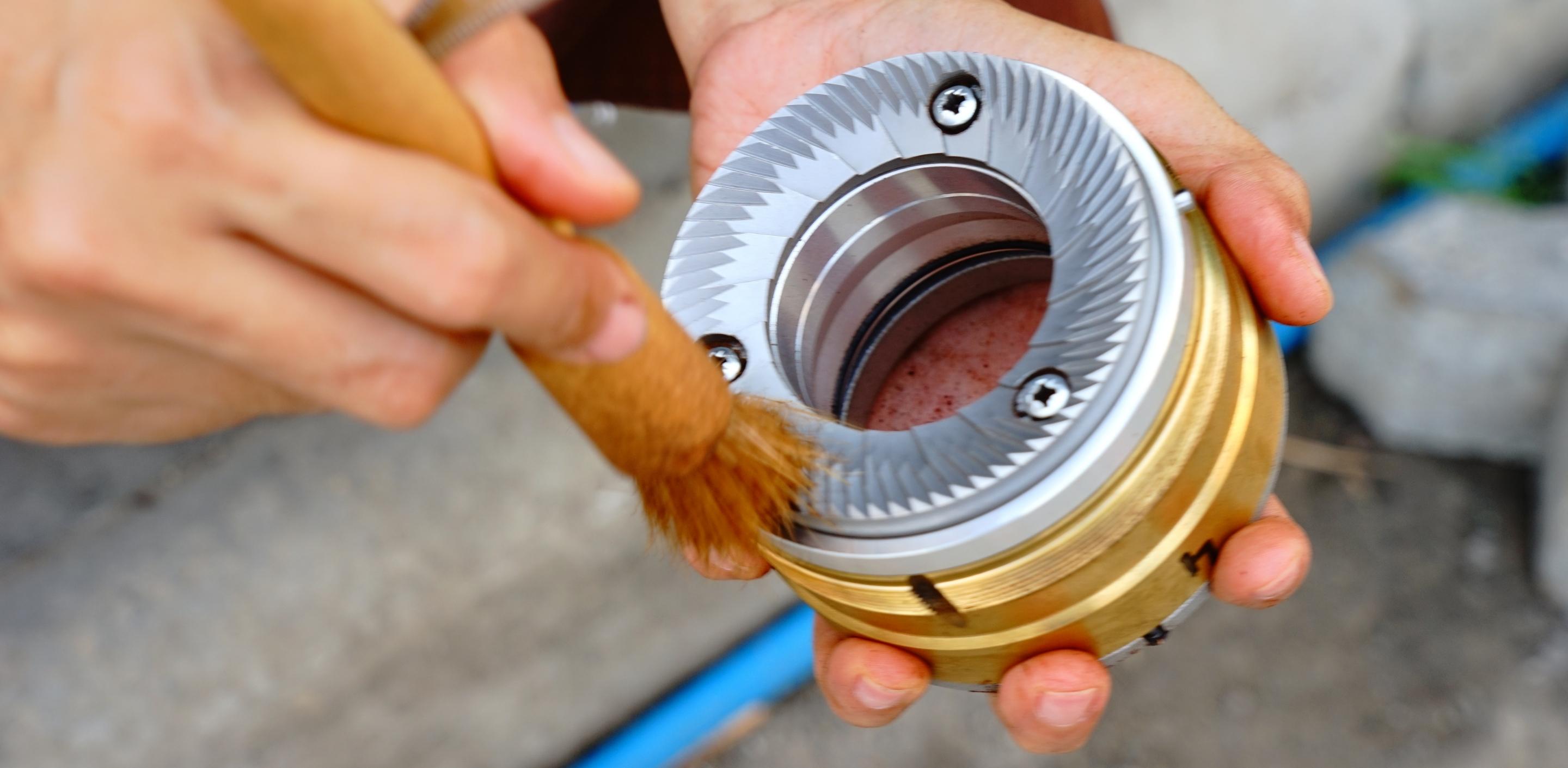Troubleshooting Common Coffee Grinder Issues

Your electric coffee grinder has been grinding your beans precisely, consistently, and efficiently for months, resulting in great shots. Unfortunately, your coffee journey has abruptly come to a halt. Perhaps the grinder burrs have stopped spinning, or the coffee is suddenly coming out far too coarse or fine. Luckily, we're here to help. Join us as we explore some of the most common issues with motorised coffee grinders, and discuss the simple steps you can take to get them back in working order.
We’ve divided this post into several sections that outline the issues you might encounter, and their solutions. For a deeper dive into the reasons behind some of them, we'll be following up on this article - keep an eye out for more soon!
- Coffee ground too fine or coarse
- Common coffee grinder issues
- Jammed coffee grinders
- Overheated coffee grinders
- Blunt grinding burrs
- Misaligned grinder burrs
- More troublesome grinder issues
Coffee ground too fine or coarse
Sometimes a coffee grinder can seem like it just doesn’t want to play ball - the ground coffee it produces is either far too fine or far too coarse. Usually, this is simply a problem of calibration: the grind size setting needs to be adjusted. For a complete step by step on how to calibrate a motorised grinder, see our article on the subject.
If you attempt to calibrate your grinder with no success, you may be experiencing a more severe issue. The sections on blunt grinding burrs and below may shed some light on what to do about it.
Common coffee grinder issues
If your coffee grinder is not functioning, good news, it is probably not permanently broken. There are a lot of things that can happen to electric grinders that make them seem like they’re unusable, while they actually are just in need of some basic maintenance. Quite often, the problem has an easy fix. Sometimes it’s as simple as turning the power switch on if it’s been accidentally knocked, so it’s always worth checking through this list of common problems first:
Issue: Has the coffee grinder has been unplugged?
Solution: Plug the grinder back in
Issue: Has the electrical outlet switch been turned off?
Solution: Turn the outlet back on
Issue: Has power to the electrical outlet been tripped at the breaker?
Solution: Turn the electrical breaker back on (be aware that if an appliance is tripping a breaker repeatedly, it may be malfunctioning electrically, and needs to be checked)
Issue: Has the grinder’s power switch been turned off?
Solution: Many commercial coffee grinders have secondary main power switches on the side or underneath that can get accidentally knocked into the off position. Some domestic grinders will have these also. Check for one, and turn it back on again if it’s off.
If the grinder has a light that indicates it is receiving power, and yet it still isn’t functioning when operated, it’s time to see if the next set of issues may be the one you’re experiencing.
Jammed coffee grinders
NB: Always ensure that the coffee grinder has been unplugged from the electrical outlet before performing maintenance tasks
Another common issue that electric coffee grinders have is becoming jammed. There are a number of reasons that this can happen, but the result is usually the same - the grinder looks like it has power, you can press the buttons or use the switches, but the burrs won’t spin when you do.
If your coffee grinder is in this situation, the next step to take is to empty out the hopper, grinding chamber, and dispensing chute, and try the grinder again - without anything in it - to see if it operates.
Below are the most common reasons an electric coffee grinder will jam, and the ways to fix the issue:
Issue: Foreign material has made its way into the grinding chamber
Solution: Empty out the hopper and clear the grinding chamber of any debris
Issue: The grinding chamber is clogged up with coffee oils or really fine coffee grains
Solution: Empty out the hopper and clean out the grinding chamber. Regular emptying and cleaning with a brush will greatly help in preventing any build up of oil or fines in the grinding chamber. If there is a great deal of caked-on oil in the chamber, you may wish to dislodge it using a product such as grinder cleaning tablets
Issue: Ground coffee has gotten caught in the dispensing chute and blocked the exit from the grinding chamber
Solution: Check the dispensing chute, and dislodge any ground coffee that is in the chute. Small, narrow brushes are ideal for this task.
Issue: The grinding burrs have been set too close and are locked together
Solution: Set the burrs farther apart by making the grind size coarser.
If your coffee grinder was jammed for one of these reasons, it should be back in good order once the issue is resolved.
Overheated coffee grinders
Motorised coffee grinders are usually equipped with a thermal cutoff switch that interrupts power to the motor if it gets too hot, to prevent permanent damage. If this has happened to your grinder, the appliance is probably hotter than normal to touch. It's likely that one of the following has occurred:
- Grinder has been left running without any beans in it
- The grinder has been used more intensively than it was intended to be
- The grinder’s burrs are worn, and the grinder has to work harder than intended to grind coffee
For the first two concerns, the solution is very simple - give the grinder time to cool down, and the thermal cutoff switch will disengage, allowing the appliance to operate again. In order to cool the grinder down faster it can be placed inside a fridge for a little while.
The third concern - worn grinder burrs - requires a slightly more in depth solution; see the next section on blunt grinding burrs for an explanation.
Blunt grinding burrs
The burrs in a coffee grinder will get blunt with repeated use. Eventually the edges on the burr incisions will become so worn that they will be unable to effectively cut the coffee beans. At this point the grinder will have to work excessively hard in order to produce ground coffee of a small size. It will take longer to grind the same amount of coffee that it had previously, and if operated for any length of time, the grinder will get hot, potentially overheat, and shut itself off.
Other effects of blunt grinding burrs are that they will:
- gradually have to be set to finer and finer settings in order to produce the same result
- grind coffee with more and more variability in size
- produce more clumps in the ground coffee
- produce more very fine particles in the ground coffee
The only real solution to the issue of blunt grinding burrs is to replace the burrs. It is often quite possible to replace grinder burrs yourself, but you will need to have an accurate understanding of exactly what to purchase as a replacement, and how to ensure that new burrs are fitted correctly. Doing so is something that we’ll cover in a future article, as we’ll need to go into some depth. There are a great many grinders on the market, and a great many more grinder burr options - even getting the right parts can be challenging.
Thankfully, most coffee grinders come with grinder burrs that are rated for several hundred kilograms of coffee beans, so needing to replace burrs isn’t an issue that occurs all that regularly, especially on grinders used at home that experience relatively little use.
Misaligned grinder burrs
It is possible for the burrs in a coffee grinder to be misaligned. This means that one or both of the burrs are not fixed in place evenly, and there is a disproportionate amount of space between the burrs on one side compared to the other.
The effect of misaligned burrs is that the variability of grind size is increased - you will notice that you produce significant amounts of both large and small particles of ground coffee at the same time - bad news if you’re trying to achieve a consistent extraction.
If you’re experiencing a high level of inconsistency in your ground particle sizes, it’s possible that you have misaligned burrs. Rectifying the misalignment can be as simple as reseating one or sometimes both of the burrs, which you can do yourself if you’re confident in your mechanical skills. It can get more complicated than that too - so we’ll delve into aligning burrs more fully in a future article.
More troublesome coffee grinder issues
There are of course many more issues that can occur with coffee grinders than those we’ve covered above. If you’ve run through the issues outlined above, and haven’t met with a solution that worked for you, it’s likely that there’s a more serious problem.
Mechanical Faults
Mechanical parts can wear out over time; motors can fail, handles, switches and buttons can break, and so forth. Some of these problems will be visible and immediately apparent, though some, such as a faulty motor, will not. Many replacement parts for coffee grinders are readily available, and the solution may be as simple as obtaining and replacing the appropriate part. However, If there is any concern about electricity being associated with a particular component, may we humbly advise that you ensure repairs are undertaken by a qualified professional.
If you have attempted to diagnose and rectify a failed grinder using this article and met with no success, it may be time to have it diagnosed by a technician.
Electrical Faults
Electrical faults can happen with any electrical appliance - circuits can short, wires can get broken, capacitors can fail, and electronics can break. Such issues generally cause the same problem - the appliance will not turn on or the electronic components will not operate. If you have a grinder in this situation and you have checked through all of the common issues above, you may be facing an electrical fault. An electrical fault is not something that you should attempt to fix yourself unless you are a qualified electrician - if you believe this to be the case, please ensure that you get your grinder looked at by a professional.
So there you have it, many of the common concerns with grinders expounded upon. Hopefully you've found the means to rectify your issue. We'd love to hear from you if this article helped you, and hope you'll share it with someone who could benefit.





Leave a comment